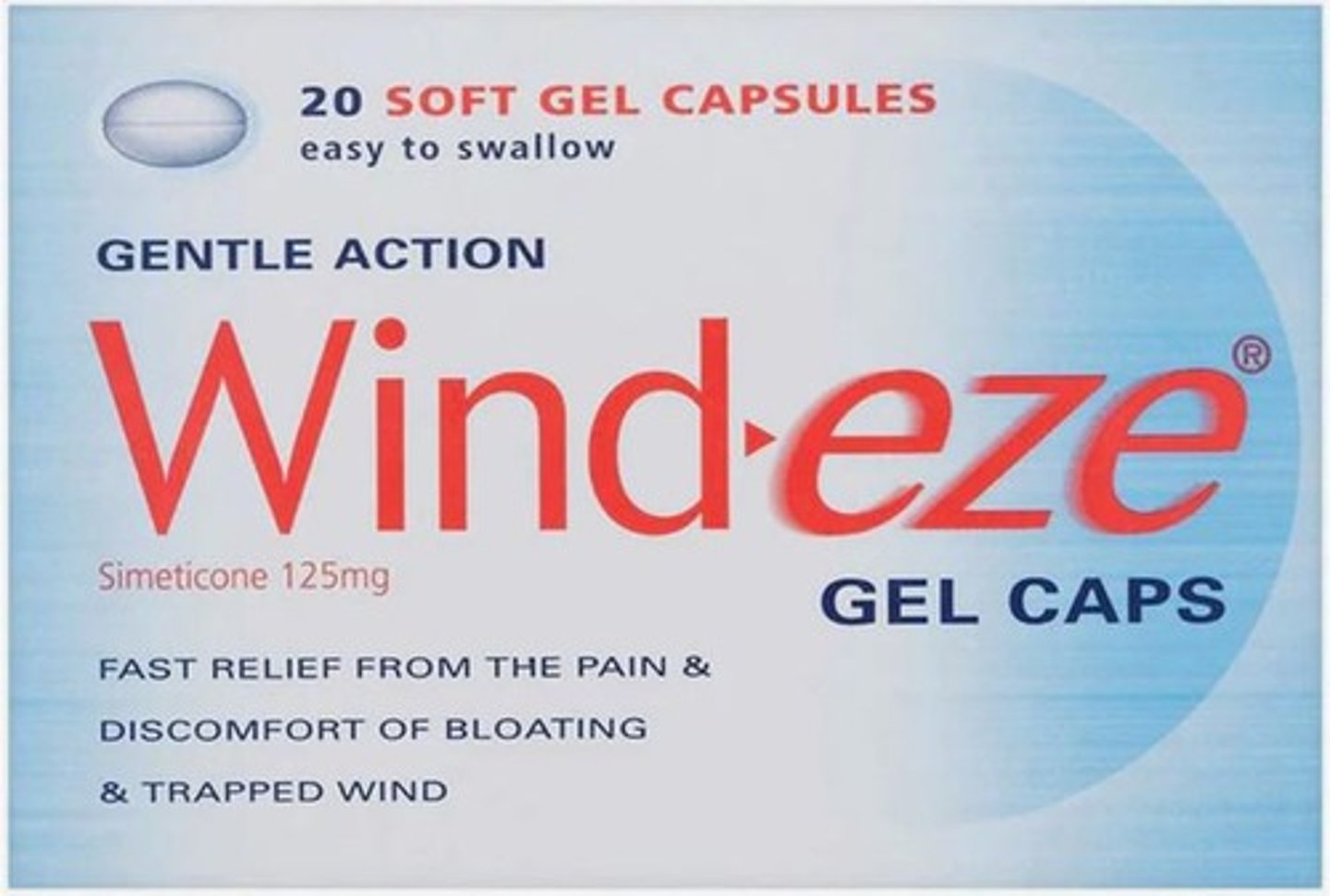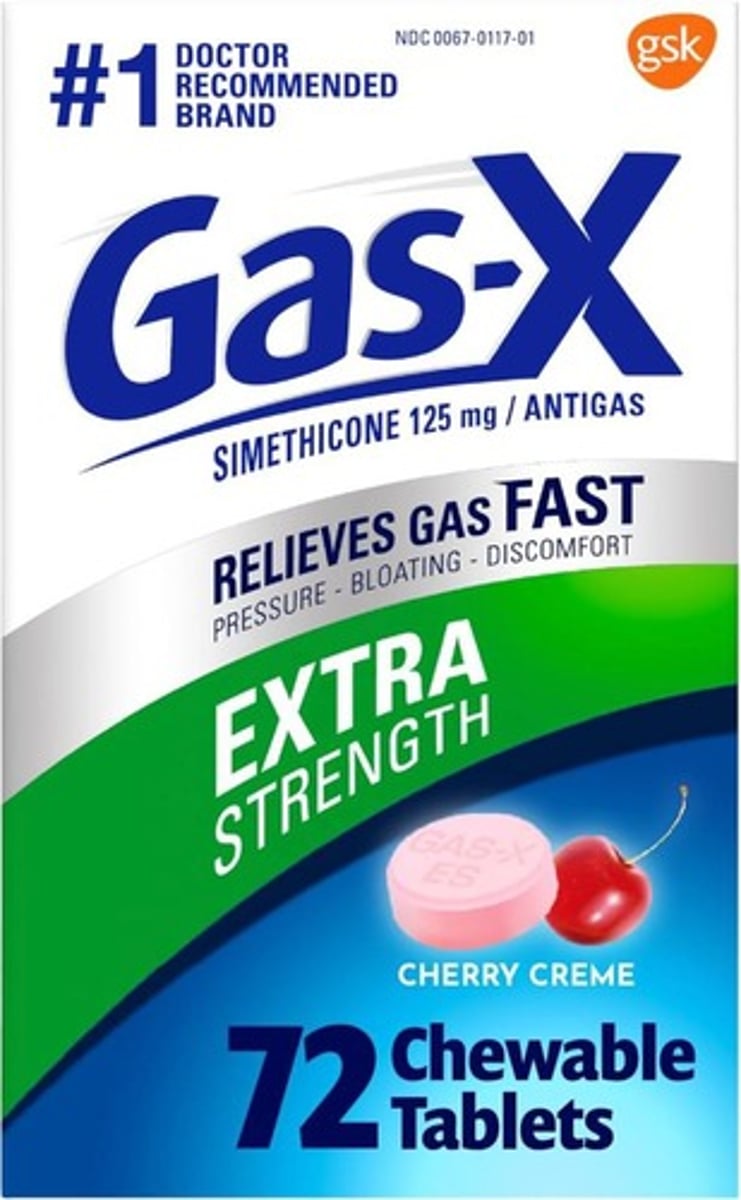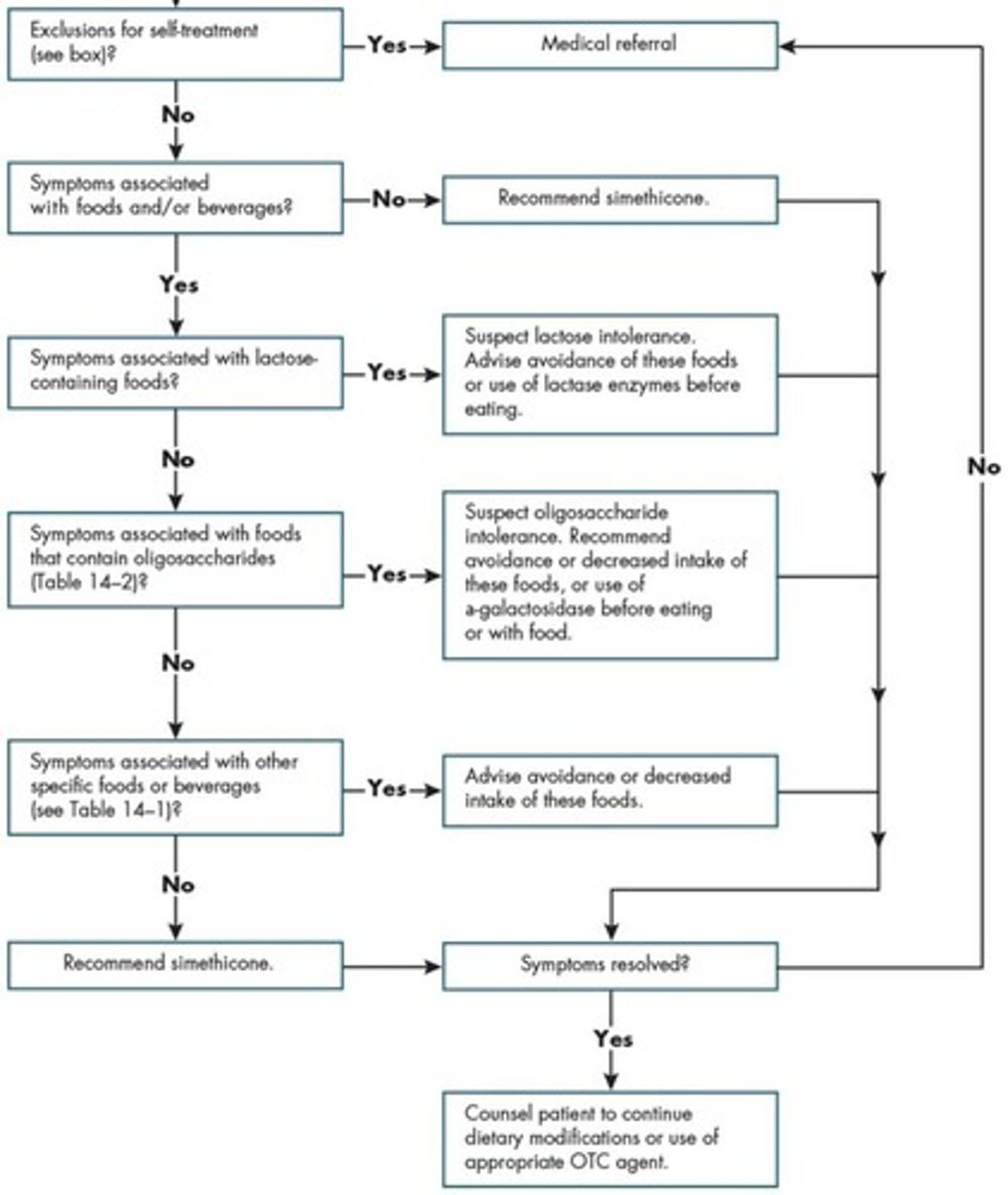Management of Intestinal Gas and Diarrhea - Gracen
1/58
There's no tags or description
Looks like no tags are added yet.
Name | Mastery | Learn | Test | Matching | Spaced |
|---|
No study sessions yet.
59 Terms
Intestinal gas
Air in the gastrointestinal tract that can lead to symptoms such as belching, bloating, and flatulence.

Eructation
Belching of swallowed air.
Bloating
Uncomfortable fullness or abdominal distention.
Flatulence
Excessive passage of air from stomach/intestines through the anus.
Non-pharmacologic recommendations for managing gas
Strategies such as avoiding gulping liquids, eliminating smoking, avoiding chewing gum, eating smaller meals, avoiding gas-producing foods, avoiding tight-fitting clothes, not lying down after eating, and developing a regular exercise routine.
Pharmacologic recommendations for managing gas
Avoiding or minimizing drugs that treat cold/allergy symptoms, affect GI motility, affect glucose metabolism, or release gas.
OTC medications for gas
Over-the-counter options including antiflatulents, digestive enzymes, and probiotics.
Antiflatulents
Medications used for the treatment of gas, such as simethicone and activated charcoal.
Digestive enzymes
Medications used for the prevention of gas, including lactase replacements and α-galactosidase products.
Probiotics
Live microorganisms that provide health benefits, such as Lactobacillus and Saccharomyces, with evidence in IBS and lactose intolerance.

Simethicone
An antiflatulent agent that reduces surface tension of gas bubbles in the GI tract and is not absorbed, hence has no known systemic adverse effects.
Simethicone dosing for >12 years
40-125mg after meals or at bedtime as needed (max daily dose = 500mg).
Simethicone dosing for 2-12 years
40mg after meals or at bedtime as needed (max daily dose = 480mg).
Simethicone dosing for <2 years
20mg after meals or at bedtime as needed (max daily dose = 240mg).
Contraindications for Simethicone
Contraindicated in intestinal perforation or obstruction.
Combination products with Simethicone
In patients with diarrhea, simethicone + loperamide produces quicker gas relief than either agent alone.
Gas-X in the UK
Gas-X is referred to as Simethicone in the UK.

Activated Charcoal
Antiflatulent agent that traps gas in GI tract.
Activated Charcoal Mechanism of Action (MOA)
Traps gas molecules and eliminates them from GI.
α-galactosidase
Digestive enzyme that hydrolyzes oligosaccharides.
Oligosaccharides
Complex carbohydrates that can cause gas production.
Dosing for α-galactosidase
>12 years: 300-450 units per food serving.
Contraindication for α-galactosidase
Not safe for patients with galactosemia.
Lactase Replacement Products
Enzyme that breaks down lactose for intolerance.
Dosing for Lactase
>4 years: 3,000-18,000 units with lactose food.
Intestinal Gas Symptoms
Signs indicating possible underlying health issues.
Exclusions for Self-Treatment
Severe symptoms or sudden changes warrant evaluation.
Signs of Serious Conditions
Include persistent diarrhea, GI bleeding, weight loss.
Age-Based Treatment
Guidelines vary for treatment based on age groups.
Common Diarrhea Causes
Include colchicine, HAART, antibiotics, SSRIs.
Fluid and Electrolyte Imbalance
Most common complication of diarrheal illness.
OTC Medications for Diarrhea
Include antimotility, antisecretory, and digestive enzymes.
Antimotility Agents
Medications like loperamide used to reduce diarrhea.
Digestive Enzymes
Help break down food components to prevent gas.
Symptoms of Intestinal Gas
Include bloating, discomfort, and excessive flatulence.
High Fiber Foods
Foods that can increase gas production in intestines.
Dietary Supplement
Products like α-galactosidase used to aid digestion.
Intestinal Gas Decision Tree
Framework for determining treatment based on age.

Bismuth Subsalicylate
Antisecretory agent reducing fluid loss and pathogens.
Lactase Replacement
Enzyme supplement for lactose intolerance management.
First-line Treatment
Initial approach for mild to moderate diarrhea.
Diarrhea Duration
Most episodes resolve within 48 hours.
Oral Rehydration Solutions (ORSs)
Fluids designed to prevent dehydration during diarrhea.
Rehydration Phase
Initial ORS phase completed within 3-4 hours.
Maintenance Phase
Second ORS phase following rehydration.
Commercial ORS Products
Includes Ceralyte, Enfalyte, Pedialyte, Rehydralyte.
Household Remedies
Apple juice, broth, colas, Gatorade for hydration.
High Carbohydrate Content
Can worsen diarrhea if osmolality is too high.
Loperamide
Opioid agonist slowing GI motility for absorption.
Loperamide Dosing
>18 years: 4mg initially, max 8mg/day.
Salicylate Toxicity
Avoid Bismuth with aspirin or salicylates.
Bismuth Adverse Effects
Includes tinnitus, neurotoxicity, and stool discoloration.
Contraindications for Bismuth
Not for patients <12 years or recovering from chickenpox.
Lactase Dosing
>12 years: 3,000 - 18,000 units with lactose.
Pregnancy Considerations
Self-care for diarrhea not recommended during pregnancy.
Geriatric Treatment Caution
Self-treatment of diarrhea is strongly cautioned.
Clinical Pearls
Pedialyte has higher electrolytes than Gatorade.
Diarrhea from Antibiotics
Common cause requiring specific treatment considerations.
Soft Stool vs Diarrhea
Fiber recommended to bulk stool consistency.